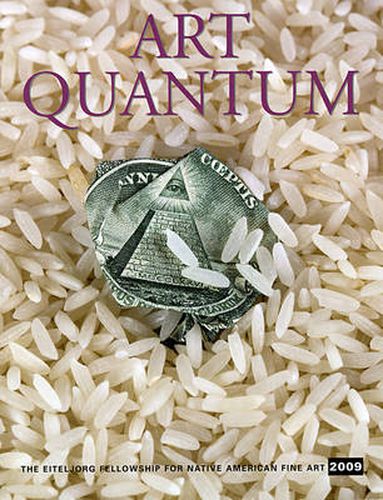Readings Newsletter
Become a Readings Member to make your shopping experience even easier.
Sign in or sign up for free!
You’re not far away from qualifying for FREE standard shipping within Australia
You’ve qualified for FREE standard shipping within Australia
The cart is loading…






While blood quantum laws have been used to determine an individual’s inclusion in a Native group, Eiteljorg fellowship artists have instead come to view themselves as belonging to the Art Tribe, through the universal process of art creation and collaboration. Art Quantum presents a selection of the extraordinary work created by the five artists selected for the 2009 Eiteljorg Fellowship. In his essay on the long career of Edward Poitras (Gordon First Nation), Alfred Young Man (Cree) places Poitras’s installations in the context of Metis and Indian identity as well as the White art establishment in Canada. Gail Tremblay (Onondaga / Micmac) illuminates the work of Jim Denomie (Ojibwa), reading his narrative paintings and intimately scaled portraits through their complex and humorous references to history, art history, and current events. Jimmie Durham (Cherokee) uses the analogy of music to explore the language of abstraction in sculptural and two-dimensional works by Jeffrey Gibson (Mississippi Band of Choctaw / Cherokee), while the subtle and often monochromatic sculptural installations of Faye HeavyShield (Kainai-Blood) are sensitively interpreted by Lee-Ann Martin (Mohawk). The volume closes with Polly Nordstrand’s (Hopi / Norwegian) reflection on the themes of longing/not belonging and placement/displacement that Wendy Red Star (Crow) documents in her photographs and appliqued dance shawls.
It is the goal of the Eiteljorg Fellowship to be a starting point and a platform for exploration of Native identity and artistic expression beyond the concepts of blood quantum laws. Essays by James Nottage, Jennifer Complo McNutt, Ashley Holland (Cherokee), and Paul Chaat Smith (Comanche) help to situate the larger issue of Native identity in the contemporary art world.
$9.00 standard shipping within Australia
FREE standard shipping within Australia for orders over $100.00
Express & International shipping calculated at checkout
While blood quantum laws have been used to determine an individual’s inclusion in a Native group, Eiteljorg fellowship artists have instead come to view themselves as belonging to the Art Tribe, through the universal process of art creation and collaboration. Art Quantum presents a selection of the extraordinary work created by the five artists selected for the 2009 Eiteljorg Fellowship. In his essay on the long career of Edward Poitras (Gordon First Nation), Alfred Young Man (Cree) places Poitras’s installations in the context of Metis and Indian identity as well as the White art establishment in Canada. Gail Tremblay (Onondaga / Micmac) illuminates the work of Jim Denomie (Ojibwa), reading his narrative paintings and intimately scaled portraits through their complex and humorous references to history, art history, and current events. Jimmie Durham (Cherokee) uses the analogy of music to explore the language of abstraction in sculptural and two-dimensional works by Jeffrey Gibson (Mississippi Band of Choctaw / Cherokee), while the subtle and often monochromatic sculptural installations of Faye HeavyShield (Kainai-Blood) are sensitively interpreted by Lee-Ann Martin (Mohawk). The volume closes with Polly Nordstrand’s (Hopi / Norwegian) reflection on the themes of longing/not belonging and placement/displacement that Wendy Red Star (Crow) documents in her photographs and appliqued dance shawls.
It is the goal of the Eiteljorg Fellowship to be a starting point and a platform for exploration of Native identity and artistic expression beyond the concepts of blood quantum laws. Essays by James Nottage, Jennifer Complo McNutt, Ashley Holland (Cherokee), and Paul Chaat Smith (Comanche) help to situate the larger issue of Native identity in the contemporary art world.